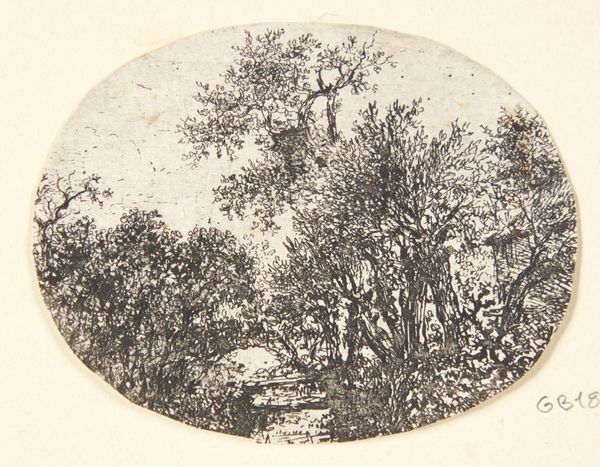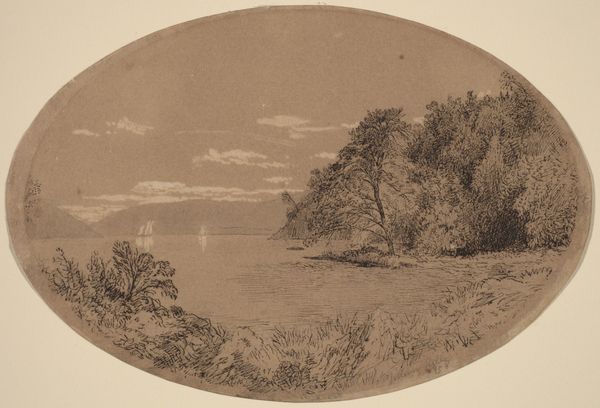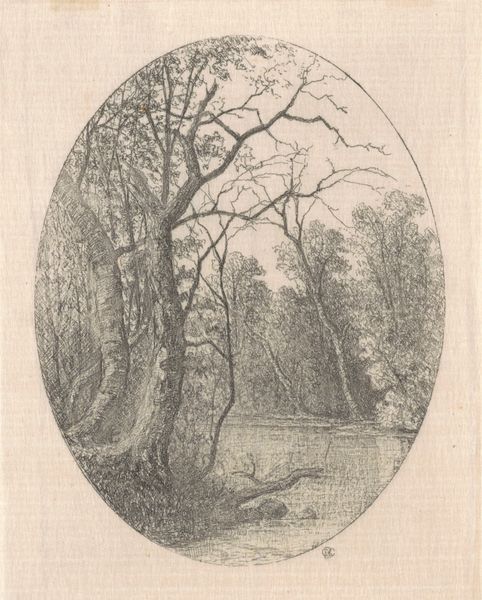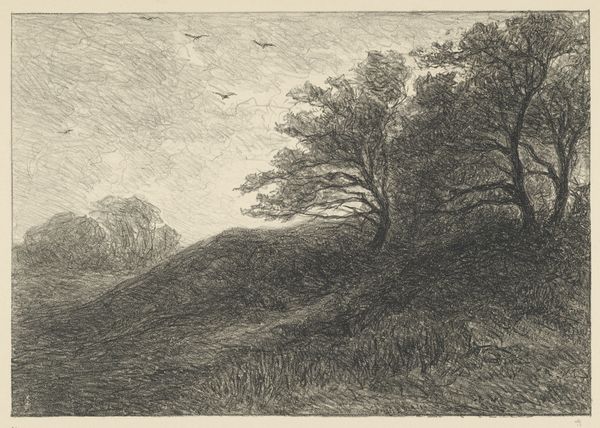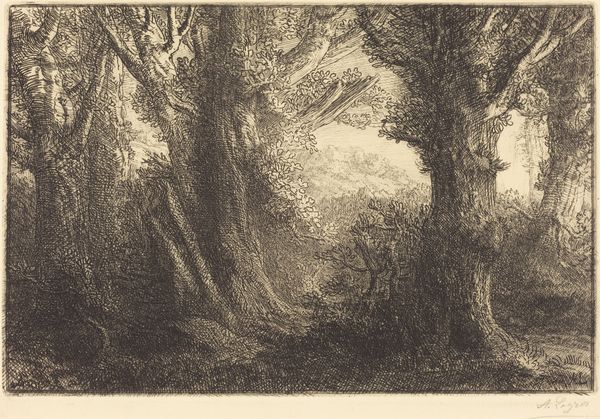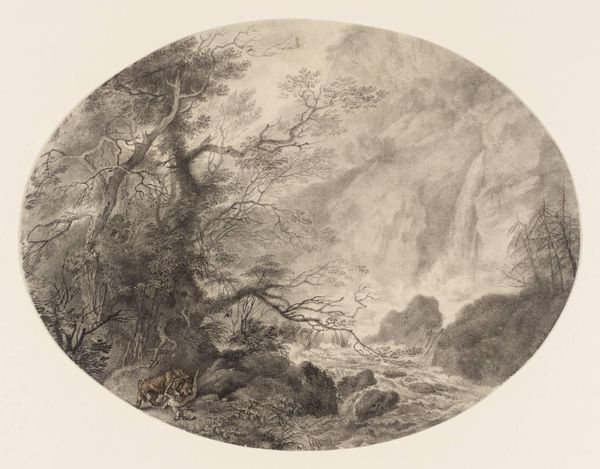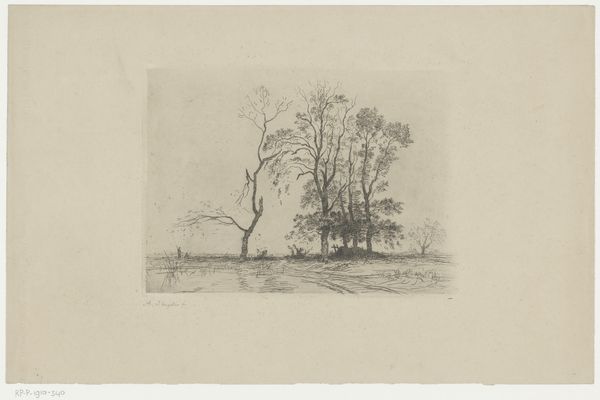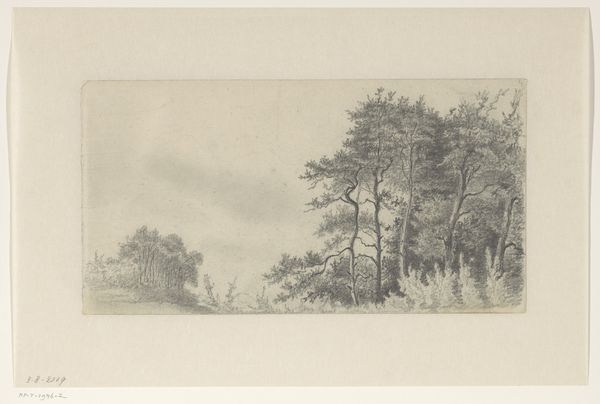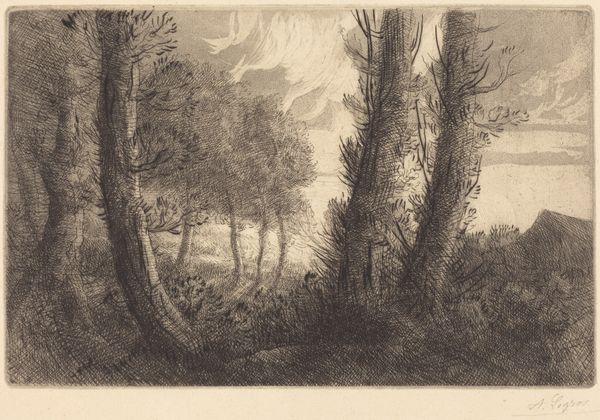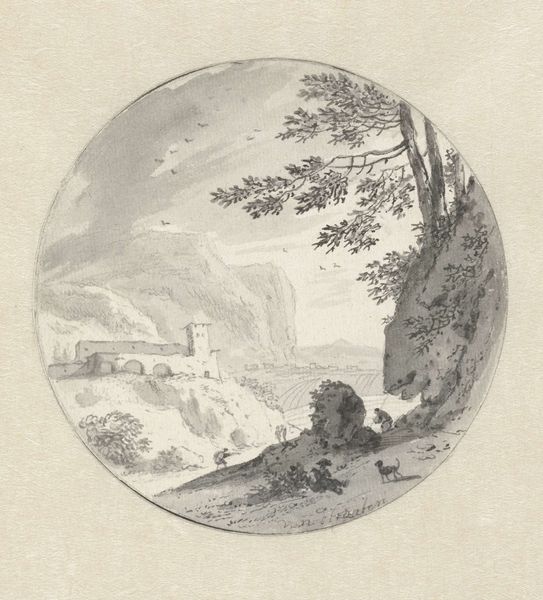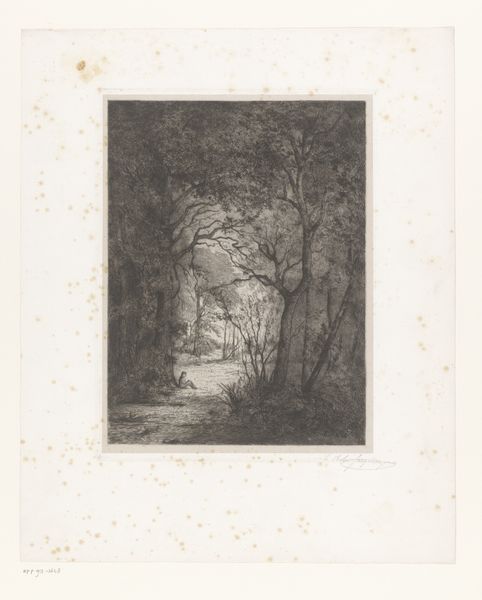
drawing, watercolor
#
drawing
#
landscape
#
charcoal drawing
#
watercolor
#
forest
#
romanticism
#
watercolour illustration
#
watercolor
Dimensions: height 98 mm, width 154 mm
Copyright: Rijks Museum: Open Domain
Editor: So, this is Johannes Franciscus Hoppenbrouwers' "Bosrand," dating roughly between 1829 and 1866. It's a watercolor and charcoal drawing currently held in the Rijksmuseum. The somber monochromatic palette gives it a wistful feeling. How do you read this work? Curator: What strikes me immediately is how the artist’s chosen medium shapes our perception. Watercolor and charcoal were readily available and relatively inexpensive, indicative of the democratization of art production during the 19th century. This wasn’t an oil painting for a wealthy patron, but an accessible scene crafted from commonplace materials. Consider the labor involved in producing charcoal itself – burning wood, a process deeply intertwined with human needs and industrial progress. Does the medium inform how we see the 'forest' depicted? Editor: That's interesting. I was mostly looking at the composition, with those striking trees. Are you suggesting the focus shouldn’t just be on what’s *depicted*? Curator: Precisely! Romanticism often idealized nature, but what happens when we shift our gaze from the idyllic representation to the very stuff it’s made of? The rough texture of the charcoal, the way the watercolor bleeds – these aren't just aesthetic choices, but clues about the artist’s process and relationship with the raw materials at hand. How does knowing this challenge the established 'high art' traditions? Editor: So, seeing this as charcoal and watercolor makes it less about a beautiful forest and more about…work, material availability, and changing social structures. Curator: Exactly. It reminds us that art isn’t born in a vacuum, but through labor, resources, and societal contexts. We can analyze its means of production, just like any other commodity. Editor: That gives me a lot to think about; I’d never really considered charcoal as having its own history! Curator: Likewise; this attention to materials also inspires reflection on our contemporary means of artistic and economic output.
Comments
No comments
Be the first to comment and join the conversation on the ultimate creative platform.
